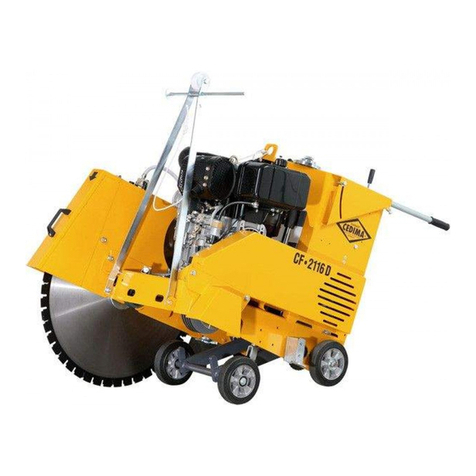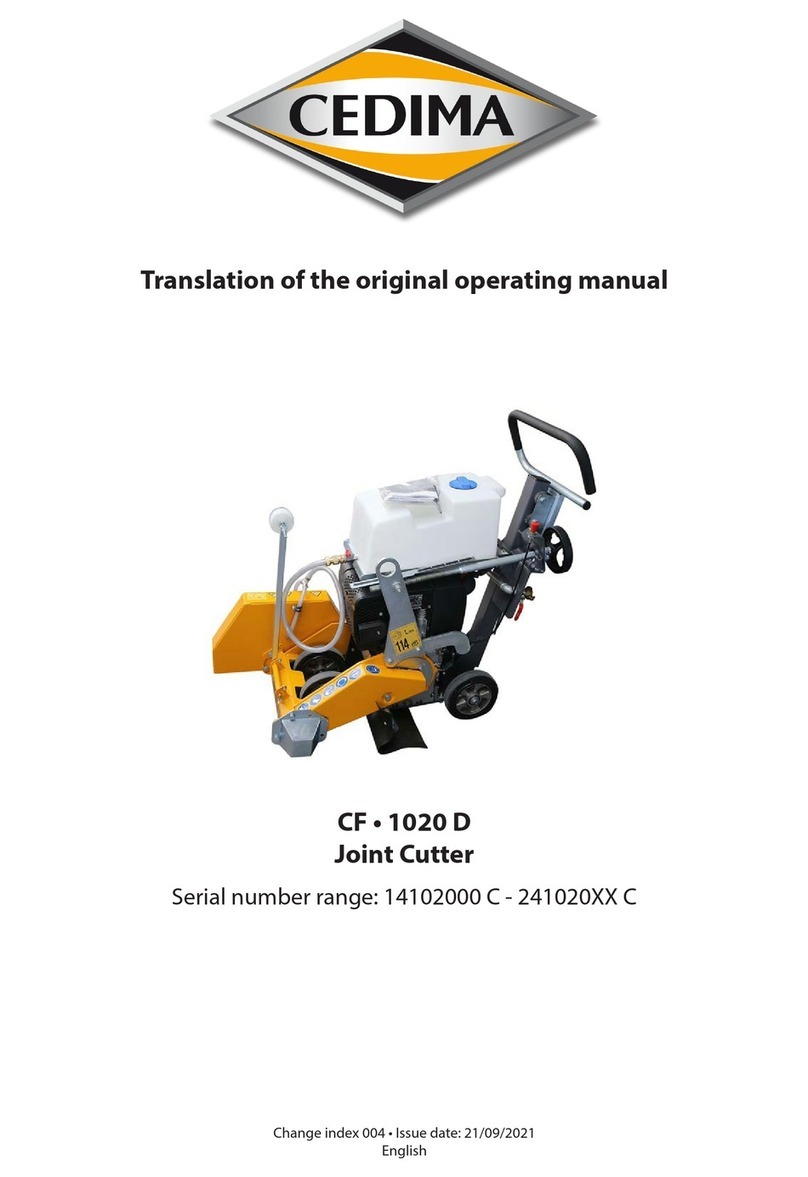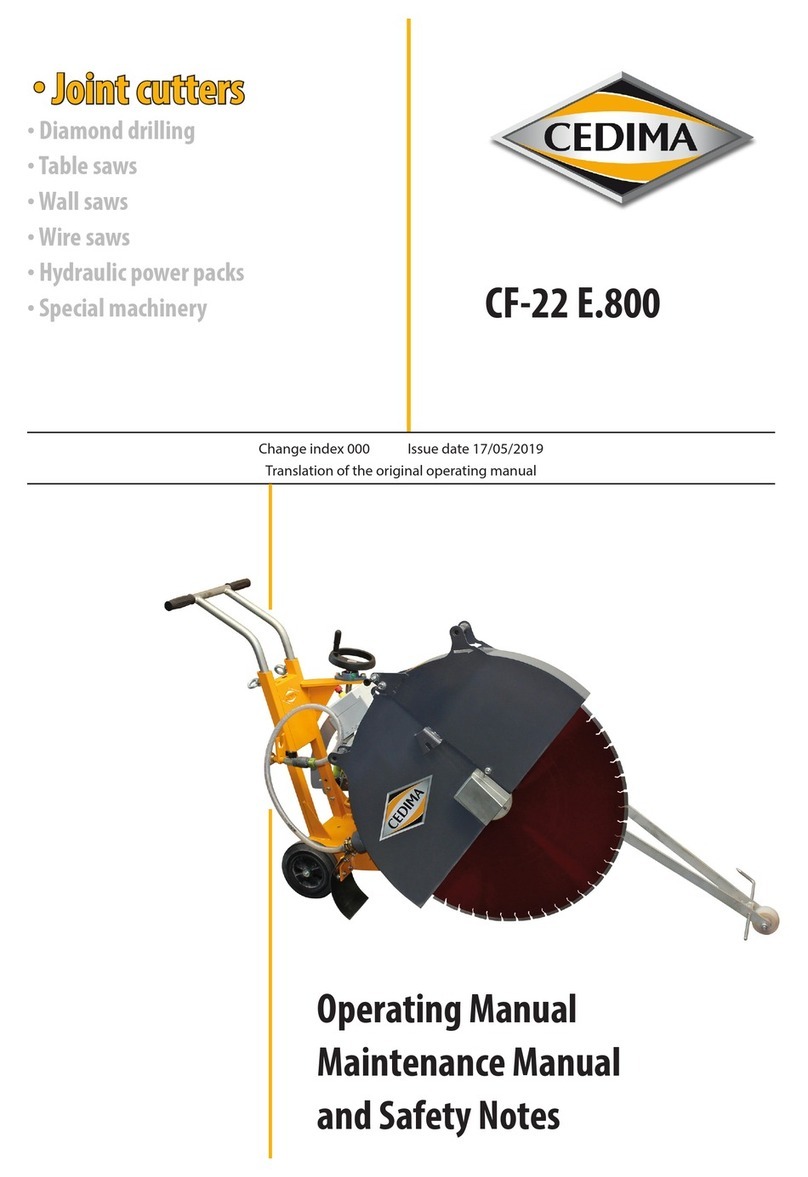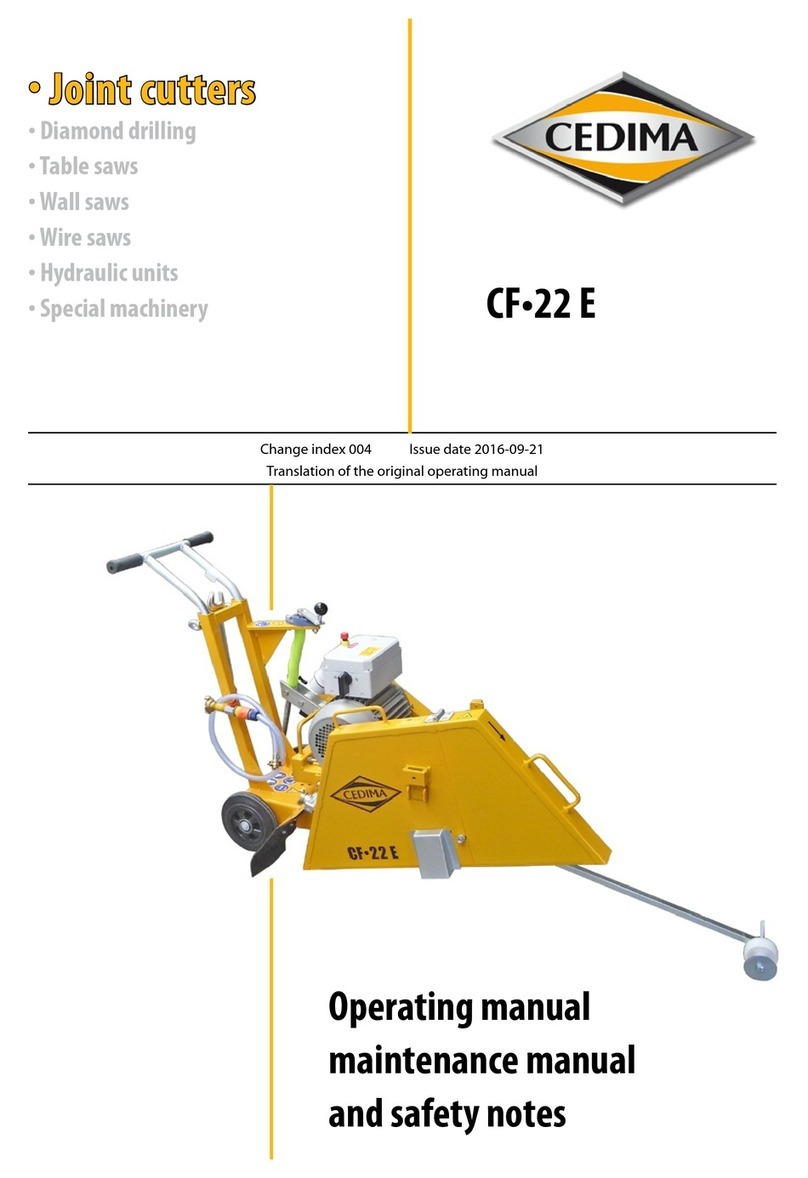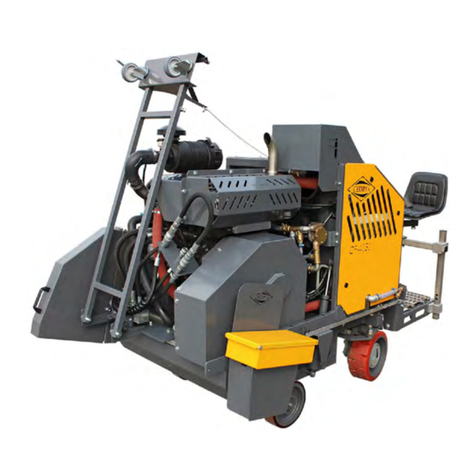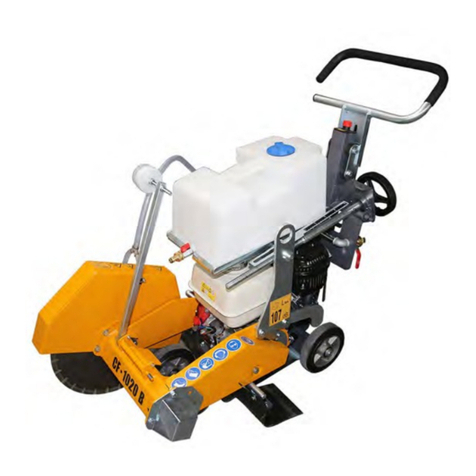
General product information
5
• CEDIMA® • Technical Documentation • All rights reserved according to ISO 16016 • Changes serving technical progress reserved •
ENGLISH
1.0 Description of the joint cutter CF•13.3 B/ CF•13.3 B-L
• The CEDIMA® CF•13.3B/CF•13.3B-L is designed
as joint cutter/oor grinder-cutter for wet cutting
of asphalt and concrete as well as similar abrasive
construction materials with diamond saw blades
for light repairs of roads, bicycle lanes and service
roads ... as well as cutting of slots for cable lay-
ing and expansion joints. in right or left cutting
(gures 1.1 and 1.2).
• The saw blade guard (9) can be mounted right
or left. Optionally a hinged blade guard can be
mounted, which allows cutting right up to walls
and edges such as kerbstone.
• The cutting shaft guard (19) which can be ex-
changed with the saw blade guard is mounted to
the respective opposite side of the cutting shaft.
• The compact design with the retractable han-
dle (15) (front), the removable water con-
tainer (7) and the push handle (5) allow for
easy transport. With the transport eye (6), the
CF•13.3B/CF•13.3B-L can be easily dislocated (by
crane, ...).
• The CF•13.3B/CF•13.3B-L is equipped with a
water cooling/ushing system with a water
guide (13) over the blade guard for wet cutting
and thus allows for dust-free operation as well as
good removal of the ground material which result
is a long service life of the diamond saw blade.
The water supply is provided via a removable con-
tainer holding up to 23 litres with shut-o valve
or via pressurised water from an external hose
connected to the Geka coupling (2). To protect
the environment and the user against splash /
wastewater, the saw blade guard is equipped with
a splash guard mat (12).
• The cutting shaft with the diamond saw blade
is driven by a modern Honda petrol engine
(CF•13.3 B)(8) or a Loncin petrol engine
(CF•13.3 B-L) with additional cyclone air lter
(14) via a V-ribbed belt (18). Apart from trans-
mitting the optimum cutting shaft speed, the
V-ribbed belt also serves as overload slipping cou-
pling and keeps hard impacts from the engine.
The engine can be stopped quickly, also in normal
operation, by the emergency stop button (3).
• Feed is achieved by pushing the joint cutter at the
adjustable, vibration-damped push handle.
• Lowering and lifting of the diamond saw blade
is done by a clampable crank handle (4) with
threaded spindle. If the saw blade is lifted, the
joint cutter brakes automatically via the wheel
brake (17). With the progressively adjustable
cutting depth adjustment, cutting depths up to
170 mm are possible and can be controlled at the
cutting depth indication (16).
• The diamond saw blades with 300 to 500 mm di-
ameter are clamped (right or left) with a clamping
width of 13 mm between the saw blade holding
ange and the cutting shaft with a holding diam-
eter of 25.4 mm plus driver pin as twist lock and
saw blade pressure ange with central screw con-
nection. The required on-board tool (1) is located
at the corresponding holder.
• Drive unit and cutting shaft's speed have been
designed to provide the best possible conditions
for cutting with CEDIMA® diamond saw blades.
For cutting we recommend CEDIMA® diamond
saw blades which ensure protection of the joint
cutter due to their easy of cutting and their
smooth movement.
• The front visor (10) is mounted to the frame and
enables the user to cut accurately on one line or
in the pre-cut.






